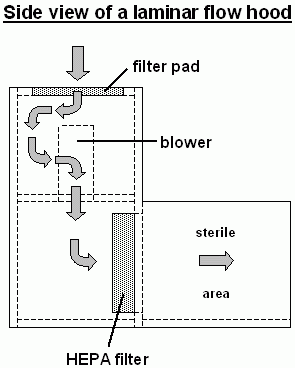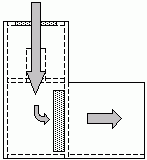How a laminar flow hood functions
In a laminar flow hood the air is passed through a HEPA (High Efficiency Particulates Air) filter which removes all airborne contamination to maintain sterile conditions.

A laminar flow hood consists of a filter pad, a fan and a HEPA (High Efficiency Particulates Air) filter. The fan sucks the air through the filter pad where dust is trapped. After that the prefiltered air has to pass the HEPA filter where contaminating fungi, bacteria, dust etc are removed. Now the sterile air flows into the working (flasking) area where you can do all your flasking work without risk of contamination.
Important parameters to make sure that the hood works efficiently
- the HEPA filter has to remove all airborne materials
- the air speed in the working area has to be about 0,5
The two types of laminar flow hoods
Before you start building your flow hood you have to decide if you prefer a vertical or horizontal air flow in the flasking area. In a vertical flow the air moves from the top of the working area to the bottom and leaves the flasking area through holes in the base. When you use a flow hood with horizontal air flow the air moves from the back of the working area to the front.


Author: Thomas Ederer
